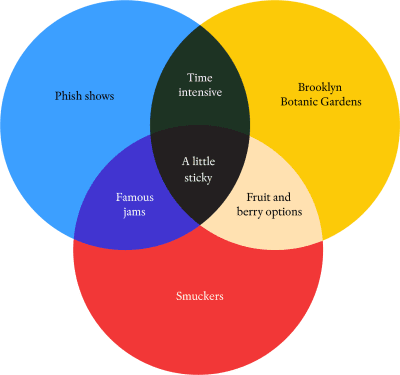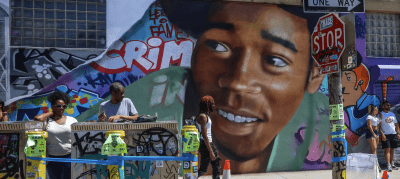How Tech is Improving the Brick-and-Mortar Experience
On Thursday, June 9, a panel of retail technologists gathered in front of a packed house at Kinfolk 94 for the most recent Northside Innovation Meetup presented by Dell and Microsoft to discuss how they’re leveraging digital to improve the brick-and-mortar consumer experience. What followed was a lively conversation about how to get people to look up from their phones to interact with the increasingly tech-savvy retail world around them.
Melissa Gonzales, the retail strategist and founder of The Lion’esque Group, opened with a case study about an augmented reality app her team built for Sally Hansen, which suggested nail colors based on a scan your skin tone. The in-store app would show the color on your hand so you could try it out without or opening the polish bottle. You then choose a color–based on the recommendation or not–out of the vending machine. The brand got data about how often shoppers bought the color selected for them and was able to see overall trends in colors purchased based on popularity, time of day, and other factors reflected in the digital display.
Paul Knight, CTO of Blue Bite, which focuses on bringing digital content to the physical world, gave an example of his agency’s work for a sports apparel brand. The company wanted to accelerate their product development cycle, which was typically 18 months for sneakers. Blue Bite enabled shoes with an interactive touchpoint using NFC technology (near field communication) so that the company could see trends across the globe through post-sale analytics. Tracking the actual product after launch showed the brand’s popularity in urban markets and exposed the post-sale “gray market” a few weeks later. This geotracking of product allowed the retailer to identify potential new markets not currently served.
Swen Graham, who leads the creative and brand strategy group at app company Foursquare, gave a recent example of how a real estate developer is using their “place insights” product to identify where women 25-34 spend their time, in order to make a data-informed decision of where to install new locations of a fashion apparel chain. This is part of a recent shift that Foursquare has made to becoming a location intelligence company rather than just a social app developer.
Gonzales emphasized that technology is a tool, and it’s always best to lead with the real-world experience. In-store technology should further the immersive experience rather than remove you from the physical store. If you don’t create your displays with that fine balance in mind, people would just shop online rather than engaging with your products in real life. And there’s always more to be learned from the data that can come from engagement within a retail space.
Knight added to that point. Digital isn’t always the answer, he cautioned. You still need a great in-store experience to get consumer attention. Analytics can help you understand user behavior so that you can refine and improve the store environment to maximize sales. When combining technologies, as Blue Bite often does, you always put the real world experience first and allow the technology to stay in the background and enhance that.
For those concerned about privacy implications of consumer data tracking, Knight reassured that this is why data is siloed and anonymized and that it’s always in our hands to decide to use private browsing or to reset cookies on our mobile devices. Graham built off this and said that users need to opt in to an experience and that there is a common understanding that using a product or service will give the user a benefit in exchange for their anonymized data.
“A great user experience and brand experience are not mutually exclusive,” Graham said in terms of ad targeting and better understanding a consumer’s interests. Understanding who is viewing ads or looking at content gives the brand the ability to show only that which is relevant to the consumer. For example, if you watch a football game you might see an oversized pick-up truck commercial, which as a city dweller might not be top on your shopping list, but if you’re watching that same game on your mobile device, you might instead see an ad for a food delivery service in your area. The bottom line is that opt in is a key component, along with anonymized data, of giving consumers a good experience while keeping their privacy in mind.
And how best to address the intersection between digital user experience and the real world? How do you get to the engagement point that is just beyond one person staring at their own mobile device? The consensus was that the next frontier that will redefine mobile is the “ambient interface” of your phone knowing where you are and communicating to the places around you. Whether it’s a passive recommendation from Foursquare for a new cafe similar to one you frequent or a retail checkout already knowing your payment info if you use Square, the future allows for the atomic unit of the mobile phone to silently communicate around you.
Above all, when creating a retail experience, “it’s not about market share, it’s about mind share” Gonzales said. You may have multiple tech touchpoints but “your window is your 24/7 billboard of interaction with your consumer.” Start there with user engagement and you’ll draw in a more motivated customer.


You might also like 



























